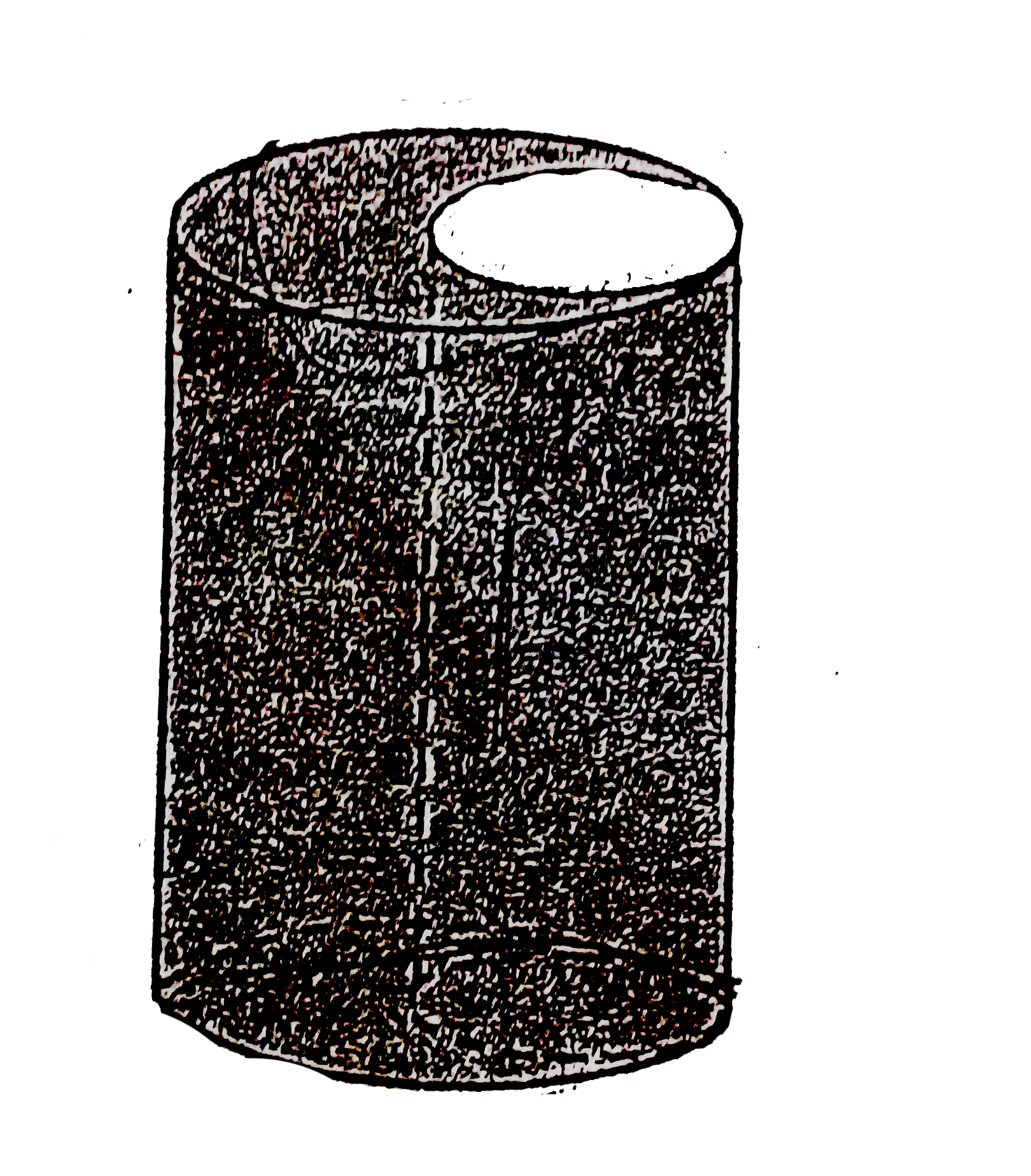There are n electrons of charge on a drop of oil of density ρ. It is in equilibrium in an electric field E. Then radius of drop is
[2neE4πρg]1/3
[neEρg]
[3neE4πρg]1/3
[2neEπρg]
The correct Answer is:C
To find the radius of the oil drop in equilibrium in an electric field, we can follow these steps:
Step 1: Understand the forces acting on the oil drop
In equilibrium, the electric force acting on the oil drop is balanced by the gravitational force. The electric force Fe is given by:
Fe=q⋅E
where q is the total charge on the drop and E is the electric field strength.
Step 2: Calculate the total charge on the oil drop
The total charge q on the oil drop can be expressed in terms of the number of electrons n and the charge of an electron e:
q=n⋅e
Step 3: Write the expression for the gravitational force
The gravitational force Fg acting on the oil drop is given by:
Fg=m⋅g
where m is the mass of the oil drop and g is the acceleration due to gravity.
Step 4: Calculate the mass of the oil drop
The mass m can be calculated using the density ρ and the volume V of the drop. The volume of a spherical drop is given by:
V=43πr3
Thus, the mass can be expressed as:
m=ρ⋅V=ρ⋅43πr3
Step 5: Set the electric force equal to the gravitational force
Since the drop is in equilibrium, we can set the electric force equal to the gravitational force:
q⋅E=m⋅g
Substituting the expressions for q and m:
(n⋅e)⋅E=(ρ⋅43πr3)⋅g
Step 6: Rearranging the equation
Rearranging the equation gives:
n⋅e⋅E=ρ⋅43πr3⋅g
Now, we can solve for r3:
r3=3neE4πρg
Step 7: Taking the cube root to find the radius
Taking the cube root of both sides, we find the radius r:
r=√(3)3neE4πρg
Final Answer
Thus, the radius of the oil drop is:
r=√(3)3neE4πρg
In equilibrium, the electric force acting on the oil drop is balanced by the gravitational force. The electric force Fe is given by:
Fe=q⋅E
where q is the total charge on the drop and E is the electric field strength.
The total charge q on the oil drop can be expressed in terms of the number of electrons n and the charge of an electron e:
q=n⋅e
The gravitational force Fg acting on the oil drop is given by:
Fg=m⋅g
where m is the mass of the oil drop and g is the acceleration due to gravity.
The mass m can be calculated using the density ρ and the volume V of the drop. The volume of a spherical drop is given by:
V=43πr3
Thus, the mass can be expressed as:
m=ρ⋅V=ρ⋅43πr3
Since the drop is in equilibrium, we can set the electric force equal to the gravitational force:
q⋅E=m⋅g
Substituting the expressions for q and m:
(n⋅e)⋅E=(ρ⋅43πr3)⋅g
Rearranging the equation gives:
n⋅e⋅E=ρ⋅43πr3⋅g
Now, we can solve for r3:
r3=3neE4πρg
Taking the cube root of both sides, we find the radius r:
r=√(3)3neE4πρg
Thus, the radius of the oil drop is:
r=√(3)3neE4πρg
Topper's Solved these Questions
- ELECTRIC CHARGES AND FIELDSBOOK - AAKASH SERIESCHAPTER - ELECTRIC CHARGES AND FIELDSEXERCISE - Exercise-II
56 Videos
- DUAL NATURE OF RADIATION AND MATTERBOOK - AAKASH SERIESCHAPTER - DUAL NATURE OF RADIATION AND MATTEREXERCISE - PRACTICE EXERCISEX
42 Videos
- ELECTRIC FIELD AND POTENTIALBOOK - AAKASH SERIESCHAPTER - ELECTRIC FIELD AND POTENTIALEXERCISE - PROBLEMS (LEVEL-II)
26 Videos
Similar Questions
n charged drops, each of radius r and charge q, coalesce to from a big drop of radius R and charge Q. If V is the electric potential and E is the electric field at the surface of a drop, then.
View SolutionIn Milikan's experiment, static electrons charge on the oil drops has been obtained by shining X-rays. If the static electric charge on the oil drop is −1.282×10−18C, calculate the number of electrons present on it.
View SolutionAn electron having charge 'e' and mass 'm' is moving a uniform electric field E. Its acceleration will be
View SolutionA charges particles particle is kept in equilibrium in the electric field between the plates of millikan oil drop experiment. If the direction of the electric field between the plates is reversed, then calculate acceleration of the charged particle.
View SolutionIn Milikan's oil drop experiment, a charged drop falls with terminal velocity V. If an electric field E is applied in vertically upward direction then it starts moving in upward direction with terminal velocity 2V. If magnitude of electric field is decreased to E2, then terminal velocity will become
View SolutionIn Millikan's experiment, static electric charge on the medias has been obtained by shining X-rays. if the static electric charge on the oil drop is −1.282×10−18C. Calculate the number of electrons present in it.
View SolutionA spherical charged conductor has surface density of charge as σ. The electric field intensity on its surface is E. If the radius of the surface is doubled, keeping σ uncharged, what will be the electric field intensity on the new sphere ?
View Solution
An infinity long cylinder of radius R has an infinitely long cylindrical cavity of radius R2 are shown in the figure. The remaining portion has uniform volume charge density ρ. The magnitude of electrical field at the centre of the cavity is-
View SolutionPotential in the x-y plane is given as V=5(x2+xy) volts. Find the electric field at the point (1, -2).
View SolutionAn oil drop having a charge q and apparent weight W falls with a terminal speed v in absence of electric field . When electric field is switched on it starts moving up with terminal speed v. The strength of electric field is
View Solution
